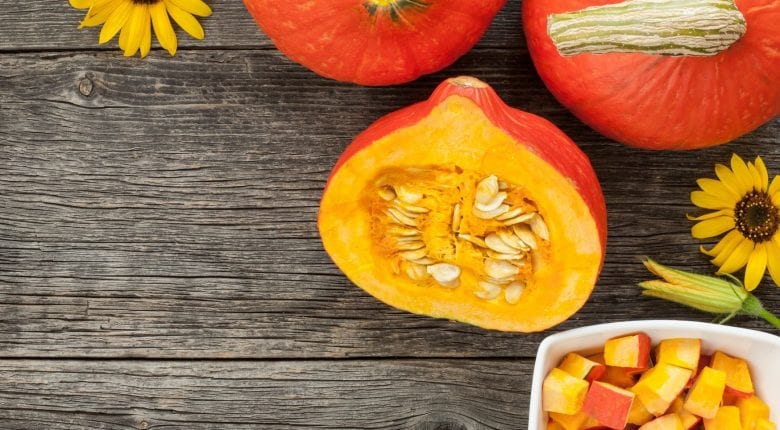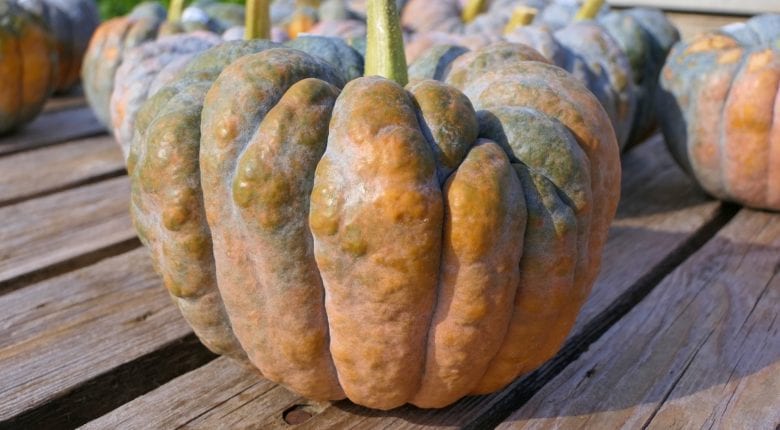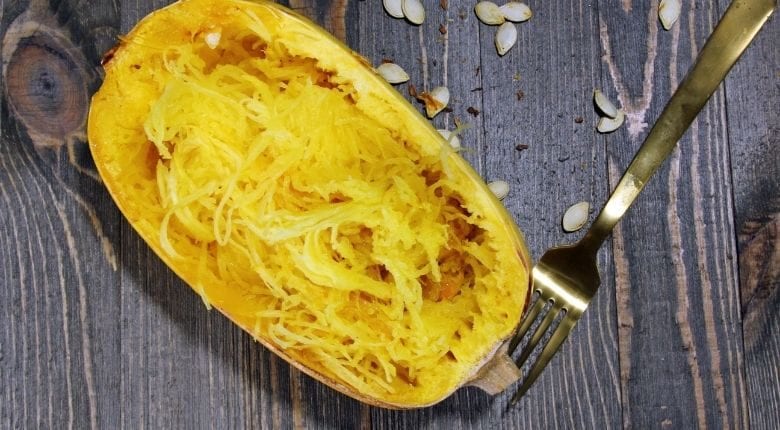Whether providing gruesome grins for Halloween, a comforting soup, vibrant salads or much more: the squash is a true all-rounder. However, not all squashes are the same. Not everything that makes a pretty autumn decoration is also edible. There is a huge range of different varieties of squash, and each one has its own special characteristics. Read on to find out more about the colourful world of squashes.
All 27 or so species of squash originate from Central and South America. From these, around 800 different cultivars have been bred, of which over 100 are edible. What you may find surprising is that squashes are, botanically speaking, berry fruits – the largest berries in the world, some of which can weigh up to 1,000 kilograms. Whether yellow, orange, green, white, black, spotted, striped, oval, round or pear-shaped, and whether warty or smooth, squashes hold even more secrets for us to discover.
Summer or winter squash?
We can broadly make a distinction between summer and winter squash. Summer squash is harvested in the middle of the year, usually in an unripe state. At this point, their skins are soft and edible and the flesh is tender. All summer squash are characterised by a hard, angular stalk. Well-known varieties include courgettes and pattypans, and others include spaghetti squash, oilseed pumpkins and carving pumpkins, but these are harvested when they are fully ripe. The wide range of ornamental squash, or gourds, also falls under summer squash.
Autumn and early winter are when winter squash is harvested, and they make their way from the fields onto the shelves from August or September until December. Their distinguishing feature is a round, corky stalk, but a hard skin and rather floury flesh are other typical characteristics of winter squash. Whether a giant pumpkin, Musquée de Provence, Red Kuri, Butternut, Turk’s Turban, Rouge Vif d’Etampes or Gele Centenaar: the edible squash enjoy great popularity with their long shelf-life and the variety of healthy, tasty dishes they can be used for.

And the winner is…the Red Kuri squash
Red Kuri squash is by far the most popular cultivar, and it’s obvious why. This orange favourite wins fans with its delicious firm yet not-so-fibrous flesh. What’s more, it’s very easy to prepare, as the Red Kuri’s thin skin is cooked in no time at all and makes the tedious peeling process unnecessary. In terms of taste, the variety has a slightly chestnut-like flavour, making it suitable for cakes as well as savoury dishes.
This squash’s handy size also speaks for itself: specimens weigh between one and two kilograms on average and provide just the right portion for a single person or a couple. On top of this is its long shelf life of several months, which is typical of winter squash. This is conditional, though, on the squash being undamaged and stored correctly. We’ll return to this later.
Fancy a change? Special characteristics of other cultivars

Butternut squash is the second most popular of the cultivars. With a similarly handy size to the Red Kuri, the skin of this pear-shaped variety is noticeably tougher, however, and is rather impractical for use in dishes with short cooking times. But the skin can be easily removed using a peeler. The flesh of the Butternut is less fibrous, almost creamy, in fact. As its name suggests, this cultivar’s sweet buttery flavour is especially tasty.

Musquée de Provence is closely related to the Butternut squash. Its advantage is mainly due to its size, and specimens often weigh up to 20 kilograms. Its thick skin is also edible but requires a very long cooking time, which is why it is worthwhile peeling it thoroughly. The deep orange flesh has a slightly acidic flavour with a hint of nutmeg. Musquée de Provence is delicious raw in salads and works equally well in soups or desserts.

Spaghetti squash makes for an especially unusual dish thanks to the consistency of its flesh. It is recommended to cook it whole, making sure to prick the skin in several places beforehand. The flesh can then be pulled out like spaghetti strands and also enjoyed with pasta sauces.
Turk’s Turban and Festival are particularly decorative varieties with edible flesh. The skins of these squash are not edible but are great to use as a container for baked dishes. Turk’s Turban tastes wonderfully nutty, while Festival has a mellow sweet potato flavour, perhaps not quite the ‘festival’ of flavour that the name suggests, though.

Carving pumpkin is the classic choice for hollowing out and making into a lantern. Its large, round shape and good stability make it perfect for Halloween carving. Our top tip: make the hollowed-out heads last longer by rinsing the inside with vinegar and spraying the outside with hairspray. Even if the fibrous flesh inside is not the greatest delicacy, you can still use it in a dish. The seeds lend themselves very well to roasting, making them perfect for a healthy snack.
Among the summer squash, pattypans are well worth a try. This small UFO-shaped variety is ideal for stuffing and baking, plus its skin is edible. This small squash is also great to use in salads as the raw flesh is very tasty too.
When you’re shopping, always check whether your squash is being sold as squash or gourds. As they contain bitter-tasting, toxic substances known as cucurbitacins, gourds are only suitable for use as decoration, and must not be confused with edible squash. When cooked, the taste of these substances is often no longer discernible. You must therefore only eat varieties that you know for certain were being sold as edible.
Squash in your diet: packed full of nutrients
Squash is a rich source of nutrients in our diet. These fruits, as they are botanically considered to be, are very low in calories at just 25 kcal per 100 g, as they are 90 per cent water. They also contain high levels of potassium, calcium, iron, phosphorus, zinc, selenium, and vitamins E and C, as well as B vitamins. Squash acts as a diuretic, and also promote good digestion thanks to their high fibre content. What is more, they are packed with carotenoids and other secondary phytochemicals. These substances have antioxidant properties, making them useful for boosting the immune system and protecting against illness.
Hidden treasures: squash and pumpkin seeds as a healthful delicacy
The seeds are usually thrown away after being scraped out, but they actually contain flavourful seed oil and valuable micronutrients. The seeds of the oilseed pumpkin, in particular, are known for high levels of substances called phytosterols, which help to reduce cholesterol and alleviate prostate conditions. These seeds also have no husk, making them especially simple to prepare. Oilseed pumpkins are therefore very important for the production of pumpkin seed oil because of their seeds.
Yet the seeds of the other varieties also make a healthy and tasty snack, whether raw, dried or roasted. Large seeds, such as those of the Red Kuri or Musquée de Provence squashes, are especially good to eat this way. They need to be shelled first before using in dishes, however, as the husk is hard and woody.
A spade is all you need: What you need to know to grow your own
Home-grown squash – sounds appealing, but what is the best way to sow and what do you need to be aware of? The first thing to do is to choose the right location. Squash plants like warmth and partial shade. It is best to choose a site with moist, nutrient-rich soil that is sheltered from the wind. To ensure suitable soil, it is recommended that you dig in compost or a slow-release fertiliser and hoof-and-horn meal. At least every three years, you should allow the soil to recover its nutrients by planting some less hungry crops.
Besides a suitable location, the right time for sowing and harvesting is also a crucial factor. Ideally, you should sow from May onwards. Ensure that you water the bed sufficiently during the growth stage and pinch out the side shoots above the first bud. Protect the fruits from underneath with dry straw. Then check the ripeness of the squash regularly from August onwards, or in September. Ripe specimens can be identified using the ‘knock test’: if you knock with your finger gently on the skin, you should hear a hollow sound. You should harvest all squash before the first night frosts.
Be careful: make sure the seed is for edible squash and avoid contamination with seeds of gourds at all costs. It would also be best to avoid planting edible squash and gourds together to prevent the development of toxic cucurbitacins. A taste test provides further certainty. Taste your home-grown squash when raw before preparing them to eat. If it tastes bitter, the squash is toxic and must not be eaten even when cooked.
Long-term storage: the joy of squash for longer
Even as the squash season ends with the onset of winter, we can still enjoy the fruits for several months after the harvest. This is conditional on the fruits being intact and stored correctly. Winter squash like cool, dry places and then they will keep for several months. Ten degrees Celsius or a little higher is ideal; a refrigerator with a cellar-temperature compartment is perfect. This will keep the squash fresh for up to 60 days.
#Squash #Wintersquash #Summersquash #RedKuri #Butternut #Berryfruit #Carotenoids #Potassium #Diuretic #Homegrown #Sowing #Knocktest #Cucurbitacins
